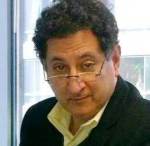Updated
Morocco’s progress noted by IMF which encourages further reforms – Jean R. AbiNader
Jean R. AbiNader
July 24, 2019

Jean R. AbiNader, Moroccan American Center
From a number of sources, it was reported that the latest IMF consultation with Morocco lent support to its efforts at reforming its economy, noted its accomplishments, and encouraged the government to stay the course. In its news release summarizing the report, the IMF noted that “Improved fiscal management and economic diversification have strengthened the resilience of Morocco’s economy in recent years. Yet, economic growth, at 3% in 2018, has not been robust enough and unemployment remains high, especially among the youth.” In its conclusion, it pointed to “the need for sustaining the recent momentum in reforms toward higher and more inclusive growth, buttressed by the private sector. Key priorities include improving the quality of the education system, the functioning of the labor market, female labor force participation, and the business environment.”
The biannual reports are part of the 2012 agreement for four two-year Precautionary Liquidity Line (PLL) arrangements, the last one approved in December 2018, which provide a line of credit to stabilize reserves when deficit spending rises. So far, Morocco has not, to its credit, needed to utilize the PLLs, which is remarkable given the “weak growth in key trading partners, large swings in international oil prices, and regional geopolitical tensions. Despite rough waters, the government stayed the course and remained focused not only on immediate stability, but also on the long-term needs of the Moroccan economy,” according to Nicolas Blancher, the IMF Mission Chief for Morocco.
Among Morocco’s accomplishments he mentioned the elimination of energy subsidies, the strengthening of social programs targeting vulnerable populations, investments in education, health, and other public services, and expanding social safety nets. These efforts have lowered the national poverty rate from 15% in 2000 to below 5% today; and extreme poverty has been eradicated.
On the fiscal management side, “a new legal framework helped strengthen oversight of public finances and limit the risk of excessive public debt.” Among other reforms are plans for a fairer tax system and recent initiatives to achieve longer-term economic goals such as raising growth, diversifying the economy, and integrating it globally.
This profile stands out in comparison to Egypt, Jordan, and Tunisia that are fueling their growth through debt financing rather than foreign direct investment (FDI). While Morocco has also increased its national debt, it leads the entire region in terms of FDI and its banking system plays a significant role in banking in Africa. Foreign investment has played a significant role in the auto and aeronautics manufacturing sectors as well as in the expansion of tourism and financial services.
The future agenda has numerous challenges, many of which are being addressed as Morocco works to meet its sustainable development goals (SDGs) including reducing regional inequalities in business and education, expanding rural road networks, enabling youth and middle class access to better-quality education and jobs, and expanding opportunities for women.
As Blancher concluded, “This experience offers valuable lessons for other countries in the region. Just as in Morocco, the IMF stands ready to help its members not only in crisis, but as they navigate their path to higher and more inclusive growth.”
Another affirmation of Morocco’s progress was featured in a story in South Africa’s Daily Maverick. The transportation system was singled out for its progress from the high-speed train and the Tangier-Med port to upgrades to the city of Tangier. The story also pointed out the vast facilities available at the port and the more than 900 companies in Special Economic Zones around it. The article also heralded the vast wind-turbine farms which, along with the Noor solar facilities in the south, represent the country’s commitment to renewable energies.
“Noor’s four stages will, when completed, produce 580 megawatts of power from a combination of (mostly) CSP and (some 70MW) from photovoltaic cells. The overall project, at $2.2-billion, faces long-term technological challenges, including the storage of heat for peak usage, but costs are coming down fast to the point that at $0.08c per Kw/h, the plant presently makes money.”
And MASEN, the Moroccan agency for sustainable energy, recently opened tenders for a 230 megawatt solar plant in the Atlas Mountains called Midelt II. Last year, MASEN awarded Noor Midelt I, an 800 MW plant worth $781.5 million to a consortium of France’s EDF Renewables, UAE’s Masdar, and Morocco’s Green Energy of Africa. The two plants will have a combined capacity exceeding that of the already operational 580 MW Noor in Ouarzazate, one of the largest in the world.
Blancher noted that “The lesson of Morocco’s contemporary success at delivering and then using efficiently big infrastructure assets is down to a combination of leadership, vision, delivery – of the need, simply, for both software and hardware. Just providing infrastructure is not enough. You need skills and systems too, and a supportive policy environment,” which is attributed to the leadership of King Mohammed VI. Among his moves are “to better balance gender rights, roll out social housing on a massive scale, modernize government, and improve the country’s foreign relations, not least through a big diplomatic and economic push into Africa.”